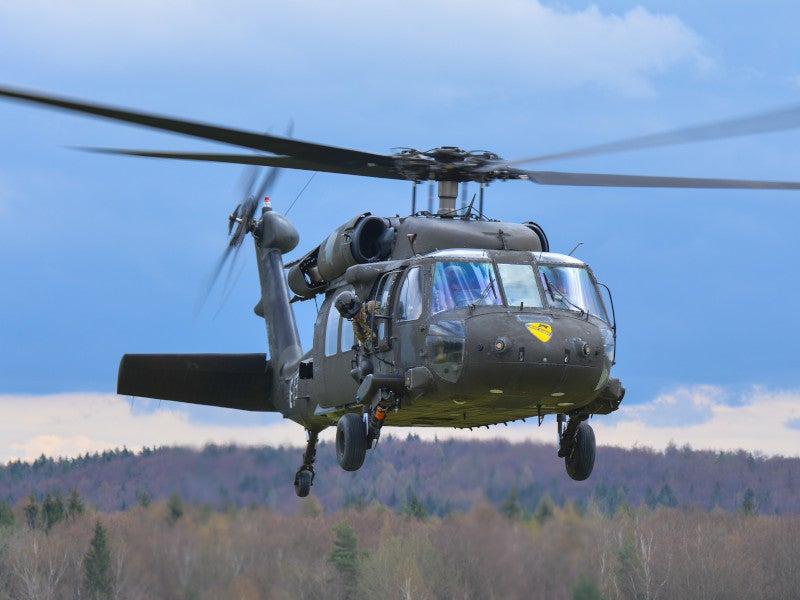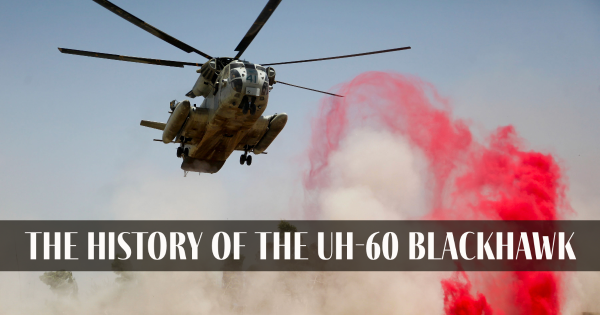Accomplishing Quality: Trick Techniques for UH 60 Helicopter Upkeep
Accomplishing Quality: Trick Techniques for UH 60 Helicopter Upkeep
Blog Article
Browsing Uh 60 Helicopter Rules and Compliance Demands

Regulatory Framework Summary
The regulative structure regulating UH-60 helicopter procedures encompasses a complicated collection of requirements and rules established by aeronautics authorities. These guidelines are created to guarantee the reliable and risk-free operation of UH-60 helicopters in numerous settings. The Federal Air Travel Administration (FAA) plays a central duty in establishing and enforcing these laws, which cover a wide variety of functional elements, including airworthiness standards, pilot credentials, maintenance requirements, and functional procedures.
Conformity with these policies is vital for helicopter operators to preserve the highest degree of security and operational stability. Failure to stick to these regulations can cause major effects, including crashes, injuries, and regulative permissions. As a result, helicopter operators have to stay notified about the current regulatory advancements and ensure that their procedures remain in full compliance with all applicable guidelines and criteria.
Airworthiness Directives and Examinations
In the middle of the regulatory framework governing UH-60 helicopter operations, an essential emphasis pushes conformity with Airworthiness Directives and performing comprehensive evaluations to support security criteria and functional integrity. Airworthiness Instructions (Advertisements) are released by aeronautics authorities to attend to harmful problems in airplane, including the UH-60 helicopter, and mandate specific actions to be taken by owners or drivers. Compliance with ADs is necessary, and failure to stick to these directives can lead to major consequences, including grounding of the airplane.
Routine assessments are vital to making sure the airworthiness of UH-60 helicopters. These evaluations encompass a variety of checks, from regular daily assessments carried out by pilots before and after trips to much more comprehensive set up upkeep evaluations executed by accredited mechanics. In addition, special examinations may be required based upon particular problems or incidents. By adhering to a rigorous evaluation regimen, drivers can her comment is here discover and deal with possible problems without delay, consequently enhancing the security and reliability of UH-60 helicopter procedures.
Pilot Credentials and Training

Pilot training for UH-60 helicopters is thorough and covers a large range of subjects, including airplane systems, emergency procedures, navigating, and mission-specific training. Furthermore, pilots undertake simulator training to practice numerous emergency scenarios in a regulated environment. This training aids pilots develop the needed skills to manage challenging circumstances effectively.


Furthermore, recurring training and expert growth are crucial for UH-60 pilots to remain present with the current guidelines, innovation, and best practices. By purchasing pilot certifications and training, operators can enhance security, maximize efficiency, and ensure compliance with regulative requirements in the procedure of UH-60 helicopters.
Functional Limitations and Demands
Pilot certifications and training offer as the structure for recognizing the operational limitations and demands connected with UH-60 helicopter procedures. Furthermore, conformity demands, such as sticking to specific flight paths, communication procedures, and emergency procedures, are necessary for keeping operational safety and regulative compliance. site Pilots should remain present with all operational constraints and requirements via regular training, briefings, and evaluates to alleviate dangers and make sure effective and safe UH-60 helicopter operations.
Emergency Treatments and Conformity Screening
Reliable emergency treatments and complete compliance screening are crucial parts of keeping operational safety and regulative adherence in UH-60 helicopter procedures. Regular compliance testing makes sure that the helicopter fulfills all regulatory requirements set forth by air travel authorities.
Conformity screening additionally extends to equipment onboard the UH-60, such as interaction systems, navigating instruments, and security gear. Making sure that all tools is functioning appropriately and meets regulative criteria is vital for secure operations. Furthermore, conformity testing may involve simulations of emergency situation scenarios to examine the crew's reaction and the helicopter's efficiency under stress. By prioritizing emergency situation treatments and conformity testing, UH-60 drivers can minimize dangers and demonstrate their dedication to safety and security and regulative compliance.
Verdict
Finally, adherence to regulatory framework, compliance with airworthiness directives, pilot qualifications and training, operational limitations, and emergency procedures are vital for navigating the policies and demands of operating a UH-60 helicopter. uh 60. It is essential for operators to prioritize safety and ensure full conformity with all applicable policies to keep the airworthiness and operational integrity of the airplane
Browsing the governing landscape bordering UH-60 helicopter operations demands a nuanced understanding of the intricate internet of policies and compliance requirements.Conformity with these guidelines is necessary for helicopter operators to maintain the highest possible degrees of security and operational honesty.In the middle of the regulative framework regulating UH-60 helicopter operations, a vital focus exists on conformity with Airworthiness Directives and conducting comprehensive inspections to promote try this website security standards and functional dependability.Effective emergency situation procedures and detailed compliance screening are important components of keeping operational safety and security and regulative adherence in UH-60 helicopter operations. Routine conformity testing ensures that the helicopter satisfies all regulatory demands established forth by aviation authorities.
Report this page